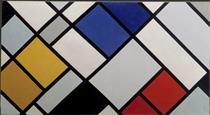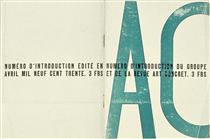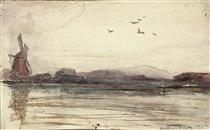
1883 - 1931
Theo van Doesburg

description
Dutch artist who practiced painting, writing, poetry and architecture. The founder and leader of “De Stijl” (“Style”), a Dutch artistic movement also known as Neoplasticism. As a poet he wrote under the pseudonym I. K. Bonset, and as a philosopher – the pseudonym Aldo Kamini.
Van Doesburg was an architect by profession; he learned painting on his own. The artist created his works after long and careful calculation, using mathematical formulas. According to the theory of “Style”, compositions were to be constructed in accordance with the proportional relations between the geometric fragments that are included in their composition.
The universal mindset of the artist made him treat all art as a whole. He preferred the synthesis of architecture, painting and design.
Doesburg’s conceptions of outer space, based on the addition of the third dimension to the picture, are relevant to this day.
Key ideas:
– The basis of van Doesburg’s artistic philosophy was an attempt to bring the objective harmony of artworks, in all their forms, towards certain geometric elements.
– The artist asserted that geometric and sculptural architecture were diametrically opposed to our perception of their images.
– Doesburg believed that modern culture contains the greatest evil, because it seeks to compare the world to humans, while the world, in fact, has no outward appearance.
– The artist claimed that the universe, and absolute perfection, can be shown only by the use of the basic laws of numbers.
He said that the Divine necessarily excludes all that is intimate, everything that is connected with the feelings, thoughts and perceptions of an individual.
1883
1916
1917
1924
1924
1931
The birth of the artist
Doesburg created the art group “Sphinx” in Leiden

“De Stijl”

“Fundamental principles of Neoplasticism.”

The split between friends

The death

